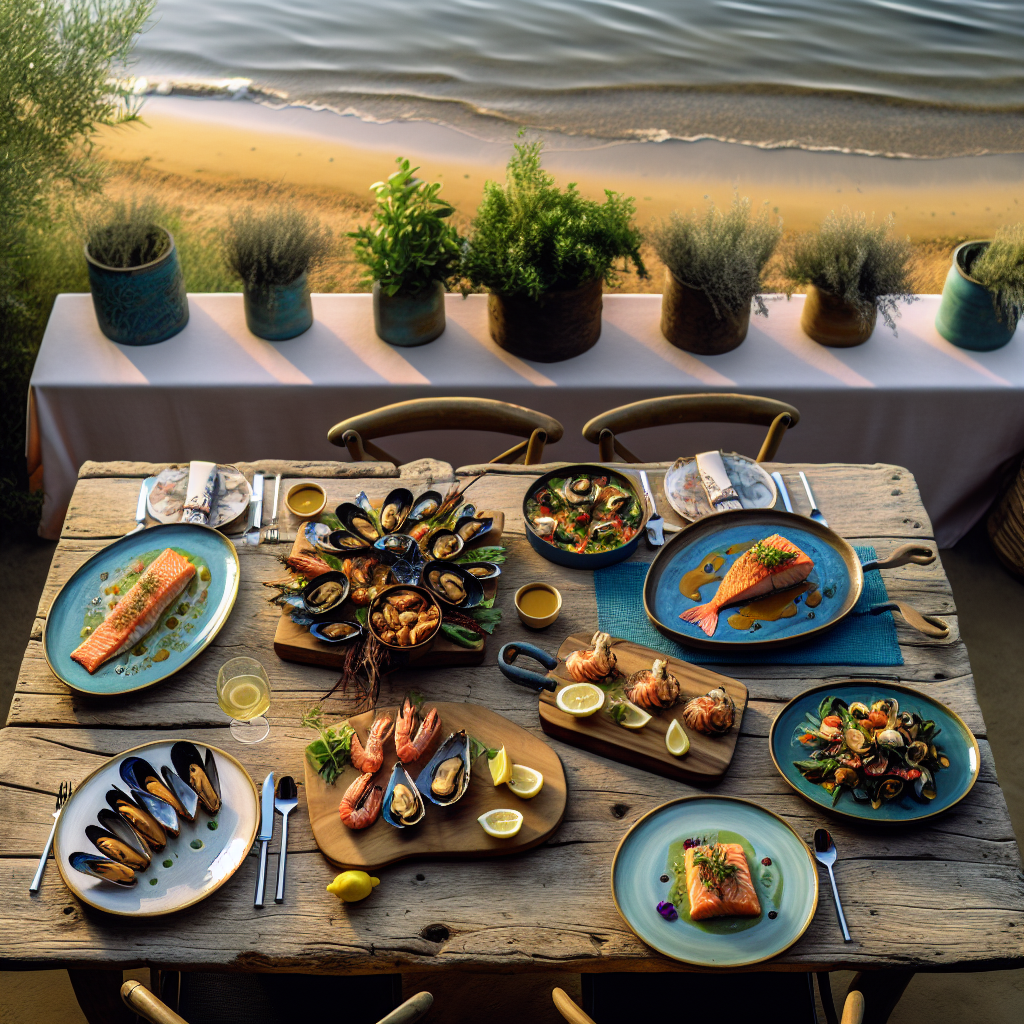Navigating the Waters of Sustainable Seafood

The ocean has long been a source of life, providing sustenance, employment, and cultural significance across the globe. However, with overfishing and environmental degradation, the delicate balance of marine ecosystems is under threat. This imbalance raises a pivotal question: How can we enjoy the bounties of the sea without depleting its resources? Sustainable seafood offers a viable answer, guiding consumers toward choices that support ecological balance and future abundance.
Understanding Sustainable Seafood
Sustainable seafood is harvested or farmed in ways that conserve ecosystems and the species within them. Imagine you’re in a coastal town, where the air is salty and the seafood fresh. You walk into a bustling market and see vivid arrays of fish and shellfish. But before you buy, you pause to consider: Is this shrimp trawled in a way that devastates ocean floors? Was this tuna caught with methods that endanger other marine life?
Sustainability in seafood involves considering the long-term health of marine populations, the well-being of coastal communities, and the environmental footprint of fishing and aquaculture practices. It’s about ensuring that the choices we make today do not compromise the ocean’s riches for future generations.
Why It Matters
Our oceans are overfished, with many species on the brink of collapse. According to the Food and Agriculture Organization (FAO), over one-third of global fish stocks are being fished at unsustainable levels. This not only threatens marine biodiversity but also the food security and livelihoods of millions who depend on fishing.
The pressure on marine environments is exacerbated by pollution, habitat destruction, and climate change. As ocean temperatures rise and acidification increases, the resilience of many marine species weakens. Sustainable seafood practices are a crucial part of the solution, aiming to reduce the strain on these ecosystems and promote recovery and stability.
The Role of Certification
For the average consumer, the task of determining which seafood is sustainable can be bewildering. Enter certification schemes — a beacon of simplicity in a complex domain. Programs like the Marine Stewardship Council (MSC) and the Aquaculture Stewardship Council (ASC) provide labels that indicate seafood has been sourced responsibly.
These certifications are not without debate. Critics argue that certification processes can be expensive and exclude small-scale fishers who practice traditional, sustainable methods. While there’s merit in these criticisms, according to me, certifications remain a vital tool in educating consumers and promoting responsible practices.
Choosing Wisely: A Guide for Consumers
So, how do you choose the right seafood? Here are a few tips that could help you make informed decisions:
- Look for Labels: As mentioned, certified products generally align with sustainable practices. But don’t rely solely on them — use them as part of your decision-making toolkit.
- Learn About Fish Sources: Educate yourself about which species are plentiful and which are overfished. Species that grow quickly and breed in large numbers, like sardines or anchovies, tend to be more sustainable choices.
- Ask Questions: When dining out or shopping, ask about the origins of the seafood. Restaurants and markets that prioritize sustainability will welcome your interest and provide transparency.
- Support Local and Traditional Methods: Engage with local fisheries that employ sustainable methods, such as hook-and-line or trap fishing. These often have lower environmental impacts than industrial practices.
An Unconventional Perspective
Some argue that the most sustainable choice is to abstain from seafood entirely, especially given the inconsistencies in labeling and certification. While there’s validity in this view, it overlooks the cultural and culinary richness seafood brings to our lives. Food is deeply intertwined with identity and community. In coastal regions, seafood isn’t just a meal; it’s a way of life, celebrated in festivals, family gatherings, and age-old traditions. Balance and moderation, in my opinion, are more realistic approaches than total abstention.
One surprising observation in this discourse is the potential role of plant-based alternatives. Innovations in lab-grown seafood and plant-based substitutes could revolutionize the industry. These alternatives aim to mimic the taste and texture of fish and shellfish, offering a cruelty-free, sustainable option. While these products are still in their infancy, they represent a growing trend that could reshape how we think about seafood consumption.
Personal Anecdote: A Lesson in Sustainability
I recall a small fishing village I visited on the coast of Portugal. Every morning, the fishermen would head out in their colorful boats, practicing traditional line fishing methods passed down through generations. Their catch was modest but sufficient, supplying the village and surrounding communities. One evening, as I dined on a freshly caught grilled sardine, a fisherman remarked, “We take only what the sea gives freely, so our children can do the same.”
This encounter stayed with me. It reminded me that sustainability isn’t about eliminating consumption; it’s about mindful choices and respecting the natural rhythms of the ocean.
Embracing the Future
Navigating sustainable seafood is a journey rather than a destination. It encourages us to take a deeper look at our consumption patterns and make ethical choices that reflect our values. As consumers, we wield significant power in shaping the food industry. By opting for sustainable seafood, we cast a vote for healthier oceans and communities.
Perhaps the future of seafood will look vastly different, driven by technology and innovation. Or maybe, as some fishermen say, it lies in returning to simpler, time-honored practices. Either way, the road to sustainability is paved with possibilities, requiring collaboration between industries, governments, and individuals.
The next time you sit down to a plate of seafood, consider the journey it took to your table. Every choice you make carries weight, contributing to a broader narrative of conservation and respect for the ocean’s bounty. And, as we embark on this path, may we savor not only the flavors of the sea but also the promise of a thriving, sustainable future for our blue planet.